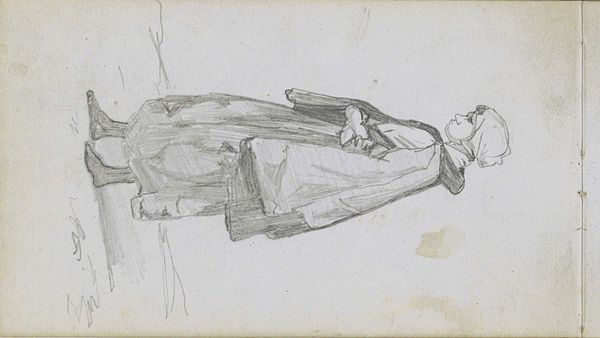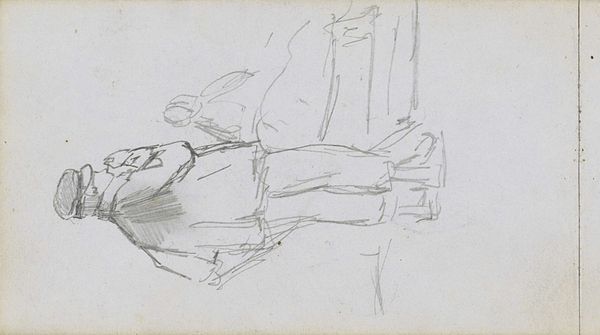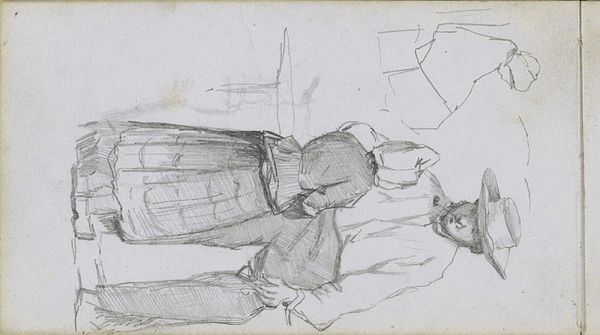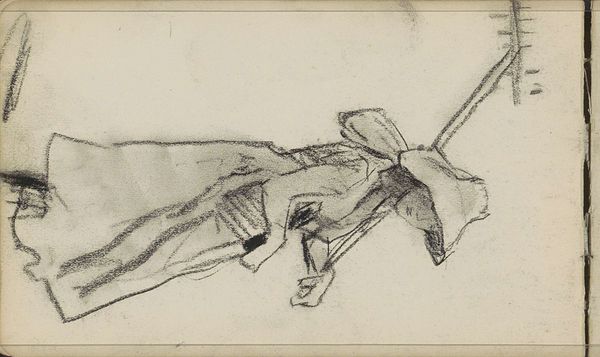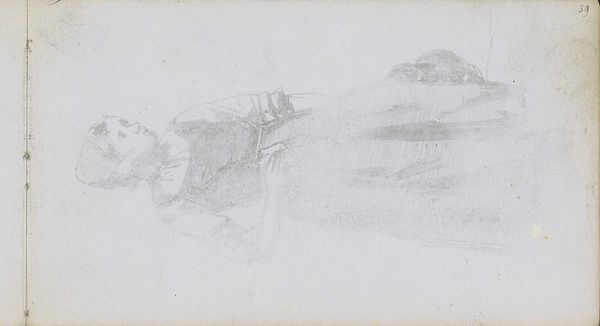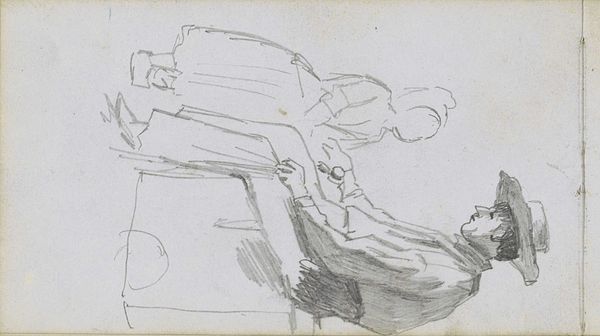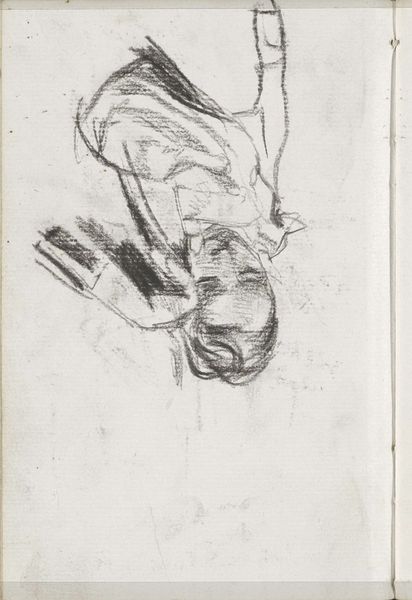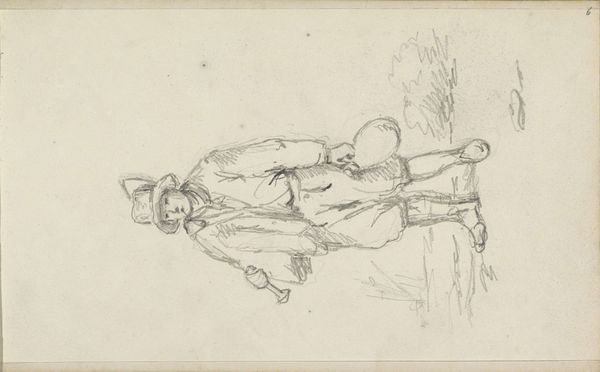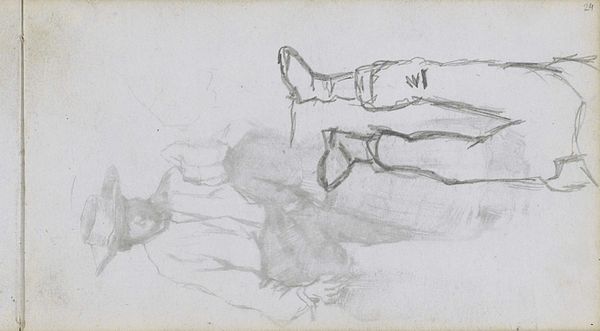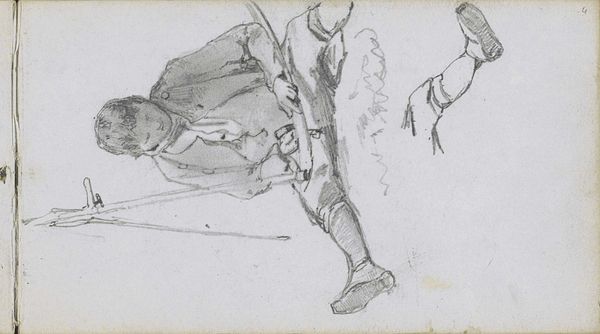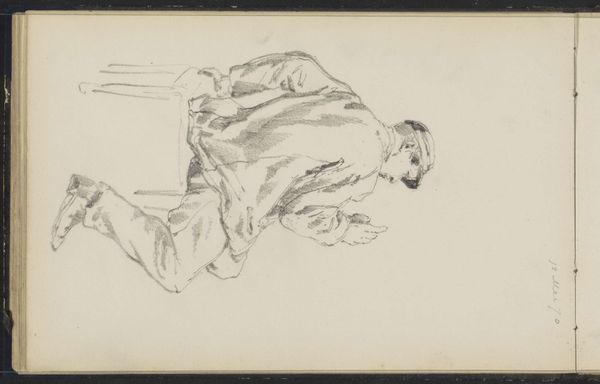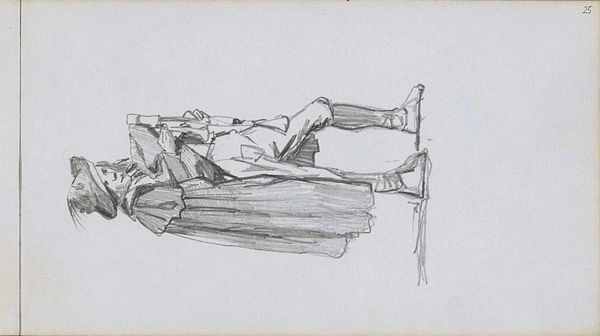
drawing, paper, pencil
#
portrait
#
drawing
#
dutch-golden-age
#
pencil sketch
#
figuration
#
paper
#
pencil
#
realism
Copyright: Rijks Museum: Open Domain
Curator: Here we have Johan Hendrik Weissenbruch's "Meisje met een schort en kruik," created sometime between 1834 and 1903. It’s currently housed in the Rijksmuseum. Editor: There's something incredibly tender about this. It's a simple pencil sketch, yet it manages to convey a depth of character that I find really touching. Almost melancholy. Curator: Well, look closer at the means of production. It's on paper, using graphite. Think about the accessibility of these materials—sketching allowed artists to rapidly capture glimpses of everyday life. It democratized the act of making art, didn't it? Editor: Absolutely! It feels like a private moment, captured quickly. It's like a memory unfolding, revealing the weight and shape of an old story, whispered and faded. See how the lines suggest weight—the fabric of her apron, the bulk of the jug she's carrying? It makes me think about how her labor defines her reality. Curator: Notice the realism here. It’s not just a beautiful face; Weissenbruch captures the essence of labor, doesn’t he? The materiality of her clothes, the purpose of her jug. These details reflect the social fabric of the Dutch Golden Age. These images allowed a certain level of voyeurism. People want to see how other classes are faring, to understand social positions. Editor: Yes, I'm drawn to that immediacy, the rawness. It’s like witnessing the artist's own process of observation. Her shoulders slightly stooped, looking weary or in deep thought. The medium, that pencil on paper, seems almost inadequate to convey her human presence. Curator: And let's not forget the act of observation, itself a kind of labor. He isn’t just copying a form, he is choosing how to see this girl. It speaks of relationships of production too. This artist makes his art because a working person creates an interesting muse for him. There's a transaction of art as a commodifiable image that we must note. Editor: It's left me thinking about all the anonymous hands that built that reality - from the crafting of that simple jug she carries to her place in time and history. Curator: Yes, to be made conscious of those human connections in that image— the relationship with the muse, but also that between materials and laborers--makes it really poignant.
Comments
No comments
Be the first to comment and join the conversation on the ultimate creative platform.
